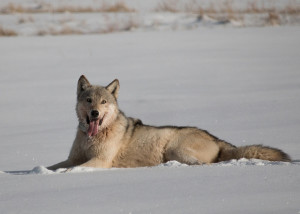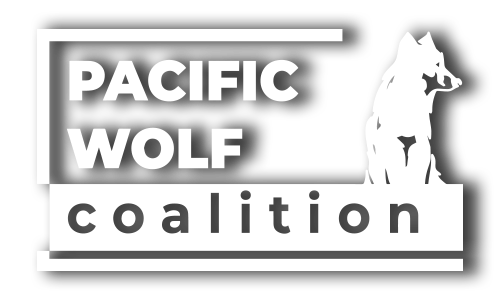Suzanne Fouty, Ph.D.
 utput of greenhouse gases, specifically carbon emissions via new technologies, carbon taxes and cap and trade possibilities (1). However, curbing carbon emissions is only part of the story.
utput of greenhouse gases, specifically carbon emissions via new technologies, carbon taxes and cap and trade possibilities (1). However, curbing carbon emissions is only part of the story.The other key part is accelerating the removal of excessive carbon dioxide (CO2) from the atmosphere and storing it somewhere else (1, 2). It turns out that plant photosynthesis does just that. As plants remove CO2 and release oxygen back into the air, they capture that carbon in their above and below plant matter (roots, plant stems, leaves, litter, humus), storing it in their living matter and in the soil (1, 2, 3, 4, 5, 6).

The great part about photosynthesis is that we can accelerate carbon extraction and storage by restoring stream system processes, increasing the abundance and distribution of wetlands and wet meadows (3, 7, 8, 9, 10), and improving soil productivity (6, 11, 12), stability and health along stream corridors (13, 14, 15, 16) and in rangelands (17) and agricultural field (1, 12). Millions of acres of public and private land await our restoration efforts. Restoration at the watershed and regional scale will help buffer human and wild communities from the impacts of climate change and variations in precipitation and will provide long-term economic and ecological stability.
The sheer magnitude and diversity of areas in need of restoration (7, 18, 19, 20, 21, 22, 39) and the seriousness of climate change creates space for innovation, excitement, a shared purpose, and the emergence of unexpected partners as we race to slow, reverse, and mitigate climate change. Our success in this effort thus requires a multi-pronged strategy – one that reduces emissions, increases extraction and storage, and uses all partners to make this happen.
Into this time of great need and anxiety emerges an understanding that wolves, beavers and plants are uniquely positioned to help us slow, reverse, and mitigate climate change. Their unique set of skills and contributions are required to restore large areas in the West with its thousands of miles of degraded streams and stream systems. They can make this happen in less than 20 years if allowed to play their part (13, 14, 19, 23, 24, 25, 26). It is time to have all hands, all paws, all roots, all microbes on deck. And so we begin, exploring some of those unexpected and valuable partners who are not only helpful, but essential for success.
How do wolves, beavers and plants help us address climate change?
The behavior of wolves and beavers leads to the creation of wetlands and wet meadows provided numbers and distributions are high enough and stable (7, 14 18, 27, 28, 29, 30, 31). These habitat types with their abundant and densely rooted vegetation (17) in turn extract large amounts of atmospheric carbon and store it (3, 7, 8, 9, 10, 21, 32) as well as decrease the large seasonal swings in stream flows that do so much damage (33, 34, 35, 36, 37, 38, 39), creating instead more even, sustained flows. The carbon is extracted from the atmosphere via photosynthesis and then stored above and below ground as biomass (roots, live plants, litter, humus).
Wolves play their part by altering elk and deer use of aspen and cottonwood stands and riparian woody vegetation (27, 28, 40, 41, 42). In response, these species start increasing in size, abundance and aerial distribution. Beavers now have food and material available for building, maintaining and expanding their dam complexes and can begin enhancing and expanding on the changes initiated and maintained by wolves (16, 43, 44). These changes brought about by the actions of these two species decrease the sensitivity of vegetation and stream flows to short-term variations in weather and longer term climate trends (33, 36, 37, 38, 45).
As beaver dams are built, ponds form behind the dams. The ponds change how water moves through the watershed by filling the stream channels with water and reconnecting streams to their valley floors (14, 15, 18, 23, 44, 46). As the spring snowmelt begins or storms blow through, the beaver ponds are refilled and water spills over the stream banks into the valley floors where the wetlands and wet meadows now exist. Because the water depths on the valley floors are shallower than in the stream channel and its riparian/wetland vegetation provides increased roughness and friction, the speed and erosive power of the water slows down. The increased temporary storage on the valley floors, in ponds and soil, along with greater vegetative roughness, leads to a reduction in flood sizes (34, 35, 36, 39). Flood damage is less and more water remains in the watershed for a longer time.
As the expanding wetlands, wet meadows and beaver ponds slow down the speed that water moves through the watershed, water has a chance to soak into the ground and create higher and more stable water tables (13, 14, 15, 18, 19, 25, 46). These higher, more stable water tables can be thought of as water savings accounts, available to the streams and plants during the dry and warm summer months. Summer stream flows are in turn higher and stream temperatures cooler (47, 48) with this additional groundwater input. Even during droughts, many streams that once dried up will continue to flow for longer periods of time (24, 25, 33, 36). Vegetation responds to the rise and increased stability of water table levels with further changes and expansion (13, 14, 15, 19, 25). As vegetation changes from dryland species to wetland/riparian species over larger and larger areas, those change bring with them increased forage for wildlife and domestic livestock and ever more carbon storage.
The benefits continue. As wetland/riparian vegetation (woody and herbaceous) increases, the amount of carbon extracted from the atmosphere and stored increases. This carbon is held in the living plants and in the soil via roots and decaying organic matter. The increased carbon in the soil, in turn, increases the ability of the soil to hold more water which is then available for stream flow or for plant use (17, 49). Soil microbes, health and productivity increases. In addition to the living vegetation, the saturated wood in the beaver dams and the organic matter in the beaver ponds also store carbon.
In summary, these water and carbon-based changes have a synergistic effect, contributing to and being enhanced by each other, providing us the following benefits:
|
|
A Path Forward
In our race to slow, mitigate and reverse climate change we need to reconsider who our valued partners are. Wolves and beavers can be vital allies in reaching our goals. Once we realize this the next steps become clear. They include:
1. Alter livestock grazing management on public and private lands to minimize conflicts with wolves using existing knowledge and techniques available (54a, 54b, 54c, 54d).
2. Minimize conflicts with beavers using existing knowledge and techniques available to limit flooding of roads, fields, and plugging of culverts by beavers (55, 56), which allows beavers and their habitat benefits to remain.
3. End commercial and recreational beaver trapping (57) in states where it is still legal.
4. End or prevent the hunting, trapping and poaching of wolves.
5. Change state and federal land management practices and policies pertaining to livestock grazing and wildlife management so that wolf and beaver numbers can expand and social structures are maintained.
We can begin these steps and more today. The climate crisis is here and worsening every day. How much worse it gets, how long it lasts depends on our choices now. Our partners, those known and those yet to be recognized, are ready to help.
The author wishes to thank Ann Mehaffy, Nancy Coffelt, Robert Beschta, Wally Sykes, Anna Morgan-Hayes, Christo Morris, and Rebecca White for their review and suggestions related to content and flow of text and slideshow, Marcelina Cravat and Eric Katsuleres for their compelling 2018 documentary film “Dirt Rich” about climate change and solutions (2), Heidi Perryman of Worth a Dam/Martinez (58) for her vast knowledge and connections to all things beaver related, Pete Bengeyfield, Robert Beschta and Cheryl Reynolds for graciously providing photos, and to my colleagues and fellow researchers past and present for their excellent work and willingness to share it. And finally to our wild partners, thank you for what you give us daily, may we come to return the favors in abundance and with joy.
The author of this page, Suzanne Fouty, Ph.D., has a background in water resources and soils. Her Master’s thesis, from the University of Arizona, Department of Geosciences, examined long-term groundwater recharge rates in arid and semi-arid regions. Her Ph.D. dissertation, from the University of Oregon, Department of Geography, examined current and historic stream channel response to changes in cattle and elk grazing pressure and beaver activity. She is a retired U.S. Forest Service hydrologist/soils specialist.


